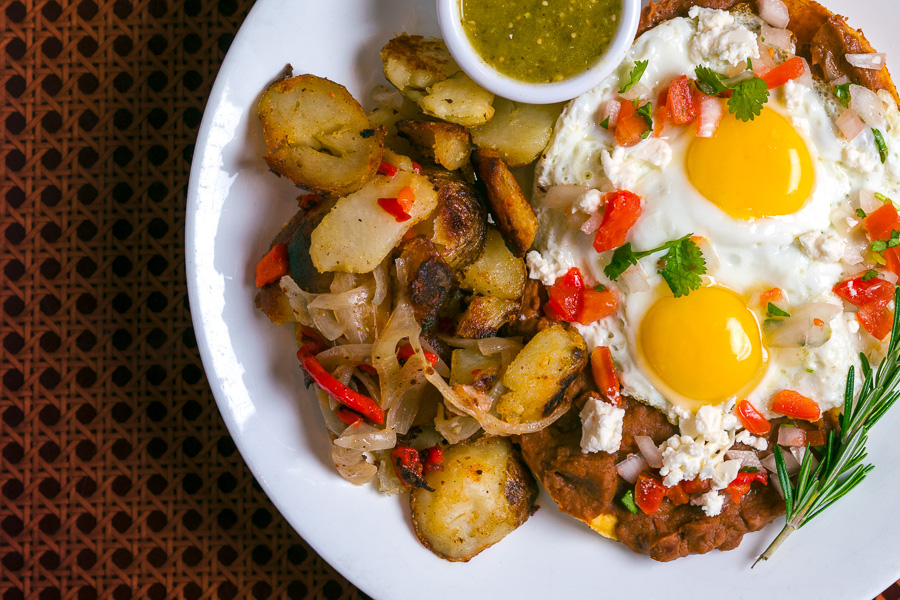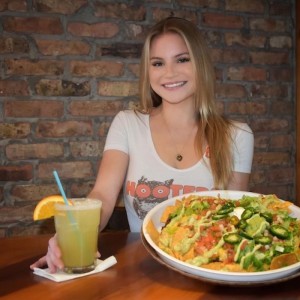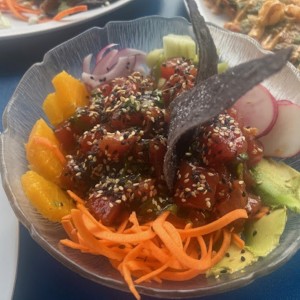The nights were getting colder. They were getting longer too. Shuffling through the dark, a wandering shape wrapped in ragged hide, barely a man but some primitive ancestor nigh unrecognizable for the jut of his brow and coarse dark hair covering stocky limbs like the fur his forebears forgot. Clutching a crude spear tipped with flint, he leans into the whipping wind and trudges onward into the black, carving a craggy runnel through the drifts of snow to mark his passing. The mammoths have gone—the last of the beasts seen more than two winters ago—and the smaller animals run to ground or fled or left dead. But they need food—him and the three left behind, one not old enough to walk, huddled away from the storm in the cave where they made their home. Where they kept the fire. So he walks. Until he can’t. Until he collapses against the stones covered in snow and the icicles in his beard threaten to anchor his great shaggy head to the ground where it lies. And he sees it—a nest of brittle twigs hidden in the boulders, three great eggs left by some absent and ancient bird. Each will feed his family for a week, left to cook in its shell in the ashes of their fire. For now, they will survive, but for the miracle of eggs.
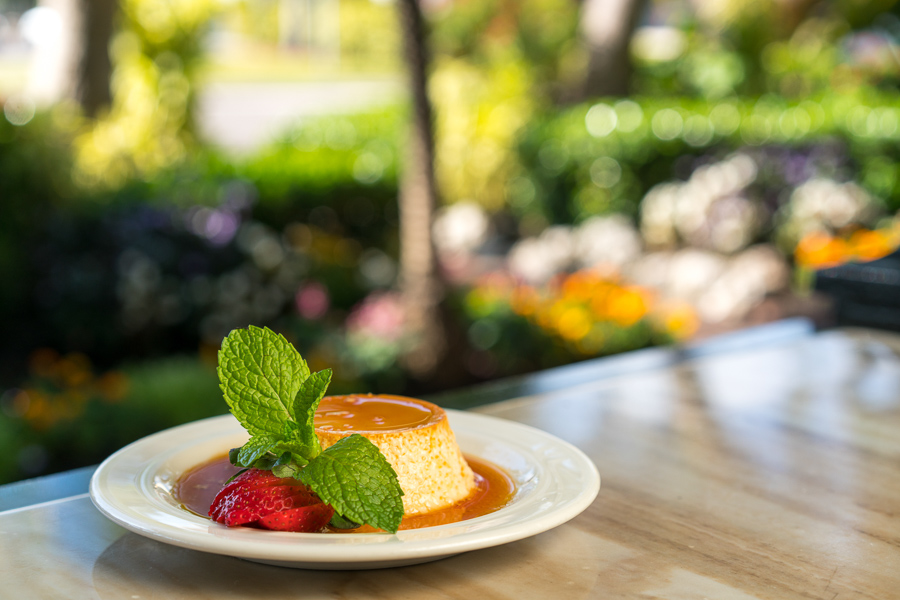
FLAN FROM CLOUMBIA RESTAURANT.
It doesn’t take being a starving caveman to find eggs pretty spectacular. Historians estimate that the chicken was domesticated for its eggs as early as 7500 BCE in Southeast Asia; in the Indus valley, jungle fowl were domesticated in 3200 BCE. But it was the Egyptians, sometime around 1000 BCE, who were the first masters of egg cultivation, creating incubation complexes comprised of hundreds of ovens in a honeycombed series of chambers and hallways where attendants carefully regulated the heat at roughly 100 degrees Fahrenheit and turned the eggs to mimic the mother hen’s attentions but freeing the animal to lay more eggs.
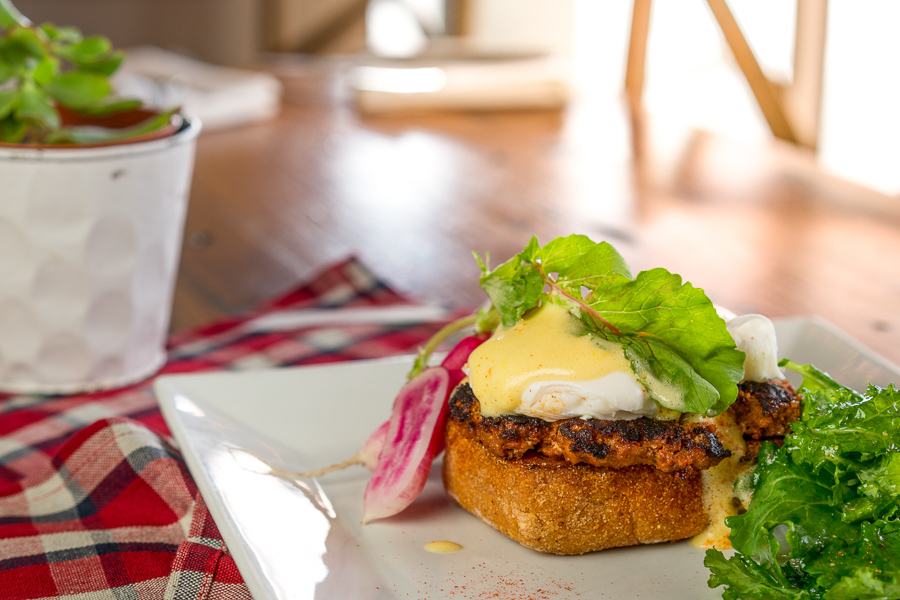
CHORIZO EGGS BENEDICT FROM STATE STREET.
Methods may have changed but appetites have only grown, and by 2015, egg production reached 70.4-million metric tons, according to the United Nations’ Food and Agriculture Organization, with China accounting for nearly 40 percent.
Humans have long been entranced by the egg—the delicate orb whose fragile shell holds within it the secret to life itself. To eat an egg, especially raw, is almost taboo, as though sipping nectar from the gods, stealing creation before its convalescence—a primordial trespass on the scale of Eden. This reverence transcends cultural and geographical boundaries and creation myths across the globe are rife with the egg as symbol, from the Phoenicians to the Chinese to the Finns and to the Polynesians, each finding within this simple foodstuff inspiration on a cosmic level. Oomancy—divination through eggs—in ancient China saw mystics painting and boiling eggs, reading the cracked shells as portents. Symbolizing life, fertility and rebirth, the egg united even warring pagans and Christians on common ground. And in some Germanic lands, farmers would smear their hoes with eggs in the hope of enriching the soil for a bountiful harvest.
This fascination is well founded—the egg is quite the miracle of evolution. The shell is a paradox unto itself, sturdy enough to shield the life growing inside it but frail enough to give way to its emergence: porous but protective. The albumen, the white of the egg, consists of more than a dozen proteins, each with a specific function, from feeding the embryo to fending off microscopic predators and disabling harmful microbes. And the yolk, suspended amidst the albumen by protein coils, supplies three fourths of the egg’s calories and a host of goodies like iron, thiamin, vitamin A and lecithin, an ampiphilic phospholipid—a fatty substance that attracts both water and fat and gives eggs their emulsive properties.
As part of a diet, humans have never tired of eggs, instead finding more and inventive ways to eat them. They can be served by themselves—boiled, fried, scrambled, poached, baked, raw—cooked in the shell or out and have found themselves at the heart of just about every cuisine across the world. It’s a simple fact that it’s hard to cook without eggs, though vegans will argue, but that’s what they do and God bless them for leaving more eggs for everyone else. As a tool in the right hands, eggs serve a variety of culinary functions such as a binder for burgers or omelets, or a glaze or garnish, for breads or salads. Eggs are necessary for any real deep-fry batter and enrich foods such as cakes, puddings and eggnogs. In the most competent hands, it aerates light desserts like sponge cakes, meringues and soufflés, thickens heavier dishes like custards and makes emulsion possible for decadent sauces like Hollandaise or mayonnaise. As author and global foodie Michael Ruhlman put it in his ode to the ovate miracle, Egg: A Culinary Exploration of the World’s Most Versatile Ingredient: “In the kitchen, the egg is ultimately neither ingredient nor finished dish, but rather a singularity with a thousand ends.”
GLOBAL TOUR
American Ingenuity
United States
A relatively young country, many of the egg’s signature dishes were created before the nation came to be, but that doesn’t mean that old American ingenuity didn’t have a couple things to say about doing them better. Custard has been around for ages—from the Romans through the Middle Ages and onward—but the first modern incarnation of frozen custard is typically traced back to Coney Island, NY in the year 1919 and a pair of boardwalk ice cream vendors named Archie and Elton Kohr. Adding egg yolk to the ice cream, the Kohrs developed a smoother product that would stay cold longer and sold more than 18,000 cones on its debut weekend, elevating a sweet treat to a decadent delight. Similarly, the cookie can be traced back to 7th century Persia, but the most popular—the chocolate chip cookie—owes its existence to Ruth Graves Wakefield, owner of the Toll House Inn in Whitman, MA in 1938. Nestle chocolate chip packages in North America still have Wakefield’s classic recipe on the back. No one backtalks Wakefield’s account, but highly contested are the origins of the famous New York brunch favorite, Eggs Benedict—a halved and toasted English muffin topped with sliced ham, poached eggs and a healthy heaping of Hollandaise. One popular origin story going back to the 1860s credits Mrs. LeGrand Benedict who, finding nothing to her liking in the original Manhattan Delmonico’s Restaurant, instructed the chef in the creation of a new dish. Another credits a New York playboy named Lemuel Benedict, who in 1894 seeking a cure for his head-splitting hangover dropped in the Waldorf Hotel and asked for poached eggs on toast with ham and Hollandaise. The chef was said to be so impressed he made it a permanent fixture. Both stories have evidence and holes and the truth is likely lost to time, but either is a fitting tribute to American appetites and down-home ingenuity. Over at State Street Eating House, Chef Adam Ruth dresses it up a bit offering a choice between lobster, steak and chorizo atop a house-made English muffin with house Hollandaise. Now mayonnaise also has contested origins, with the Larousse Gastronomique (and the name itself) claiming French beginnings, but the Spanish questioning that assertion. Either way, it was first commercially sold in jars in Philadelphia in 1907, and it was a German New Yorker named Richard Hellman who introduced what would become the ubiquitous brand in 1912. And Honey Boo-Boo gets credit for the mayonnaise sandwich. Yay, America.
Japanese Precision
Japan
Meaning literally “grilled egg,” tamagoyaki is what happens when the omelet meets Japanese precision and artistry. Combining beaten eggs with soy sauce, sugar and sometimes a bit of sake, the mixture is cooked in a rectangular pan (makiyakinabe) to form a series of layers. Coating the bottom of the pan with the mixture, once cooked the thin sheet of solidified egg is rolled into a tight spiral at one end of the pan. More egg is poured into the pan, cooked and then rolled around the existing roll, but in the opposite direction. As the layers build, the tamagoyaki takes shape. Typically a little bit sweet, this squared-off creation remains a bento box staple. Not your typical soft-boiled egg, onsen tamago are traditionally slow-cooked in the hot springs of Japan, resulting in a custard-like yolk floating in a silky white. Only found in the volcanic valley of Owakudani, kuro-tamago, or Owakudani black eggs, refers to eggs hard-boiled in the sulphuric hot springs, emerging rich black in color. Legend says that eating one adds seven years to your life.
Medieval Quiche
Germany
Typically thought to be French in origin, quiche is actually a German invention, coming from the medieval kingdom of Lothringen. The French would later take the territory and dub it Lorraine, from which the most common quiche takes its name, though originally containing only bacon in an egg and custard cream—cheese was a later addition. Today, quiche refers to any variety of open-faced pies with meats, vegetables and cheeses suspended in egg custard.
Golden Eggs
England
The British royal family loves its eggs. If the rumors are to be believed, Prince Charles demands his eggs be boiled for exactly four minutes and served promptly upon his arrival, with the security detail radioing the royal ETA ahead to his private chef, who keeps three pans boiling just to be safe. For everyone from the Queen on down, breakfast begins with an egg of some sort—fried, scrambled, en cocotte, shirred, poached—and they reappear for tea. It is said that Queen Elizabeth prefers the taste of brown eggs; a charmingly prosaic touch for an exalted figure, especially considering that Queen Victoria ate her boiled eggs from a golden eggcup with a golden spoon. But for all the regal attention, the island nation isn’t known much for its eggy inventions, and the only one that stands out they named for their neighbors. Also known simply as picnic eggs, the Scotch Egg calls for a hard-boiled egg to be wrapped in sausage, coated in bread crumbs and then deep-fried or baked until the yolk is almost firm. Fortnum & Mason, a department store in London, claims to have invented the dish in 1738, as a portable treat for affluent townsfolk taking the carriage to their country estate.
Napoleon's Omelet
France
Leave it to the French to dress up a baked egg breakfast, but the resulting eggs en cocotte is hard to argue with. Simple but elegant, eggs are broken over a small bed of meats and/or veggies and topped with cheese before being slow-baked in individual ramekins. Sophisticated and personal, a dash of cream before baking elevates the silky textures, nicely offset by a side of buttered toast. For more of a hands-on midday meal, the croque madame proves that even ham and cheese could use a little egg. A testament to the transformative power of the egg, it’s pretty much a croque monsieur improved with a fried egg. If only Proust had known. For a taste of Paris without leaving Main Street, C’est La Vie makes a mean croque madame that pairs well with almost anything from the onsite bakery. Nations around the world enjoy the omelet (omelette in French) in some form or another, but the French hold claim to the name and one of the greatest egg-based myths in history. According to legend, when traveling with his army through the small town of Bessieres, Napoleon Bonaparte was served an omelet at a local inn. Professing it to be one of the best in his life, he mandated all the eggs in the town be rounded up and used to prepare a single monumental omelet for his troops’ breakfast the following morning. True or not, every year the people of Bessieres celebrate with a festival and—what else—a giant omelet.
Versatile Pairs
China
Known also as steamed egg custard or by its traditional moniker, water eggs, Chinese steamed eggs are a silky and versatile delight enjoyed all across the mainland. Made from the simple pairing of eggs and water, the eggs are finely beaten (sometimes then strained for impurities) before adding salt and water and stirring it all to a smooth consistency. When steamed, the concoction slowly congeals into an eggy custard most often topped with scallions, seafood or century eggs. Alternatively referred to as hundred-year eggs or millennium eggs, the traditional recipe for century eggs, with rumored roots dating back to the Ming Dynasty, calls for an unbroken and uncooked egg to be covered in a paste made of alkaline clay, charred oak ash, quicklime and salt, wrapped in rice chaff and then left to cure. After a period of several weeks or even months, the mud hardens and can be peeled away to reveal the preserved—and transformed—egg inside. Sliced open, the yolk appears dark green or grey and the white a brownish jelly. Century eggs are not always easy to find, but Oriental Food and Gifts in Gulf Gate has a few in store for the curious.
Meringue
Switzerland
Home to more than just fancy pocketknives, the Swiss also attempt to lay claim to the invention of the meringue, saying it originated in the Swiss town of Meiringen. Naturally, the French and the Italians question this claim, but in a characteristically diplomatic move, the Swiss did concede to the Italians having improved upon the traditional recipe. No such concession was made to the French, whose meringue remains the simplest of the lot—egg whites beaten with sugar—but also the most popular. For the Swiss meringue, it’s a bit more of a process. Egg whites and sugar are heated over boiling water, along with cream of tartar, toasted sugar, vanilla and salt, until the whites harden and the whole thing is vigorously whisked to a shiny finish. At Maison Blanche on Longboat Key, Chef Jose Martinez serves up his meringue with yuzu cream and raspberry, proving that regardless of origin, there’s a reason meringue is a French word.
Spanish Huevos
Mexico
A traditional Spanish breakfast of seasoned day-old bread, spinach and pork ribs, bacon or chorizo, migas gets an eggy makeover in Mexico, where the bread is swapped for hardened tortillas and eggs and onions and tomatoes instead of meat. Mexico City has its own version, something closer to a garlic soup with day-old bolillo bread and pork shanks, with a raw egg added at the end to slowly cook in the broth, similar to egg drop soup. But perhaps the most popular egg dish out of Mexico remains huevos rancheros—fried eggs atop lightly fried corn tortillas and served with rice, refried beans and tomato-based salsa and avocado. At the Rosemary, huevos rancheros is served tostada-style, with pico de gallo and a welcome Mediterranean addition in Feta cheese.
Caviar & Coulibiac
Russia
Birds don’t have the monopoly on eggs and for countries bordering the Caspian and Black Seas (think Russia), the waters represent a vast nest ripe for egg-collecting, full of primo caviar producers like beluga, sterlet (once reserved for Russia, Iranian and Austrian royalty) and ossetra—all sturgeon. Traditionally, caviar refers only to the eggs of particular types of sturgeon, with other roe referred to as caviar substitutes. Typically a garnish or spread, caviar can accentuate a dish but hardly satisfies a hungry appetite. For heartier fare, Russians serve up coulibiac, a pirogi (a baked case of dough) filled with whitefish, rice, hard-boiled eggs, mushrooms and onions. More extravagant recipes call for the addition of vesiga, marrow from the spine of the sturgeon.
Shakshouka
Tunisia
North African in origin, with many food historians pointing to Tunisia as the epicenter, shakshouka has grown in popularity through the entire Middle East since its inception, finding a strong foothold especially in Israel. Onions, red peppers and chili peppers are spottily charred in a deep skillet before being drowned in a spicy tomato sauce. Making wells around the edge of the pan, eggs are broken into the recesses, buried in the tomato sauce and cooked on low heat until the whites barely set and yolks remain runny. Sprinkle with cilantro or parsley and serve immediately with crusty bread. Not easy to find, Fresh Start Café serves some of the best in town and with just the right kind of spicy kick.
Custard Cake
Spain
Like the United States, Spain has done well over the years putting its particular spin on ubiquitous dishes to claim them as their own on the world stage. The tortilla de patatas, also known simply as the Spanish omelet, turns the omelet into a hearty meal fit for a hard day’s work. Potatoes are finely sliced or diced, then seasoned and cooked in oil. Beaten eggs are added to the mix and the whole thing fried into a cake-like breakfast. In the end bearing little resemblance to either an omelet or a tortilla, the dish stands on its own. Similarly, flan—meaning a custard cake—has been around since Roman times, when it was more commonly a savory dish than a sweet one. Flan sweetened by sugar was not unheard of, but the Spanish were the first to throw caramel on top, beginning the dish’s transition in the eyes of the world from daily staple to daily dessert. After arriving in the New World with Hernan Cortes in 1518, flan became so popular that some say Mexico has taken the mantle as flan’s current capital. A signature dessert at Columbia Restaurant, it has been so popular, they put the recipe online so home chefs can give it a whirl.
Burekas
Israel
First introduced in Turkey, burekas, or borek, rapidly spread through the Mediterranean region, where it became an omnipresent snack in the state of Israel. Traditionally made from thin, flaky dough called phyllo, similar to that used in dishes such as baklava, eggs actually aren’t necessary for the dough, though its addition makes for a more savory crust for dessert burekas. Instead the egg shines in the various fillings that will fill the burekas’ crust. Spinach and feta makes for a popular morning or midday burekas, mixed with egg and parsley, as does eggplant or simply egg and cheese. Before baking, the whole pastry is basted with beaten egg and topped with sesame seeds. For a couple options, including one filled with sliced hard-boiled eggs and tomatoes, Fresh Start Café features burekas among the daily baked goods.
Balut & Kwek Kwek
Philippines
Technically it still counts as eating eggs, but balut does grey the line a bit. Taking fertilized eggs—most often those of the mallard—the bird embryo is allowed to develop over a 14- to 21-day incubation period before being steamed in the shell, leaving a tender, partially developed embryo in a natural broth. Eaten straight from the shell as a street food or simple snack, common garnishes include salt, chili, garlic and vinegar. Extremely popular in the Philippines and common in Southeast Asia, the dish remains available but controversial throughout the United States. Less controversial is kwek kwek—hard-boiled quail eggs deep-fried in a warm orange batter and served with a spiced vinegar dip.





